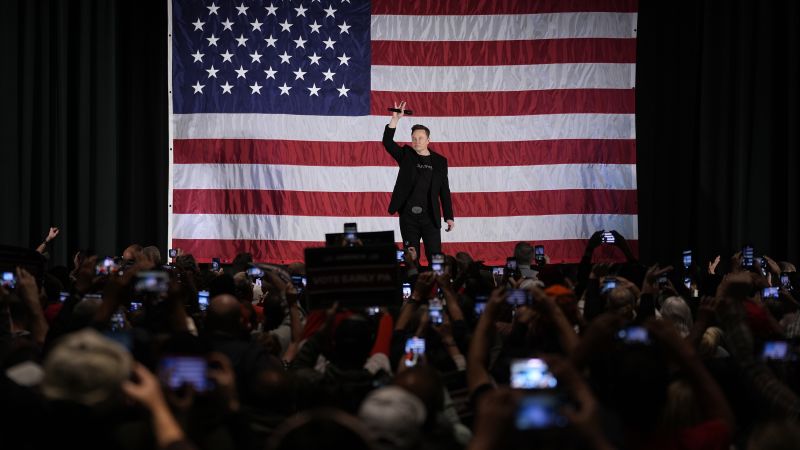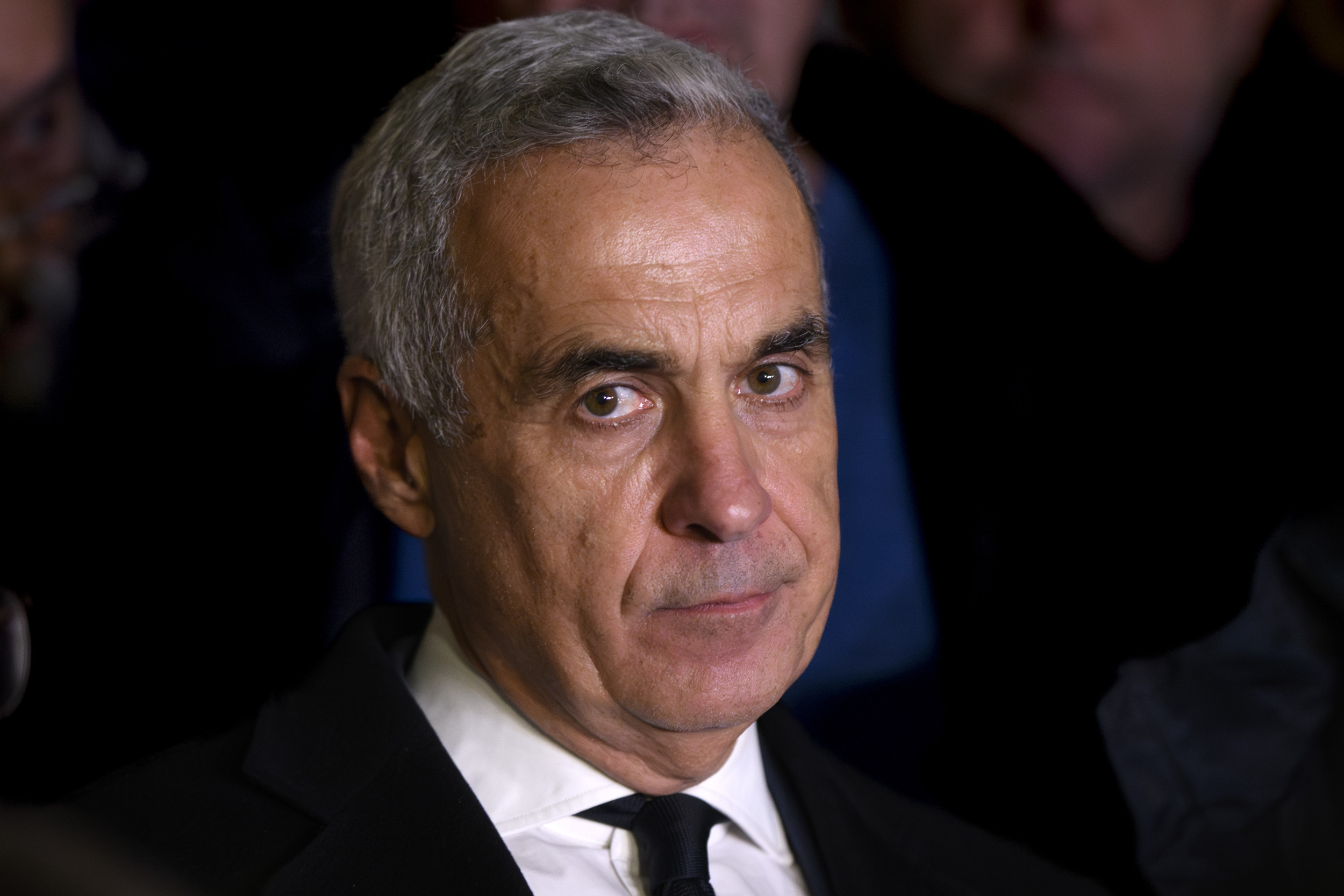CNN
—
Elon Musk spent a total of more than $290 million on the 2024 election, new federal filings show, boosting President Donald Trump and Republicans in a staggering effort that has helped to secure unprecedented access for the world’s richest person in the new administration.
The year-end filings, covering the final five weeks of the year, also revealed jockeying for influence as the new administration prepared to take power. Trump’s old campaign committee — converted into a new account he can use to flex his political muscle, despite being term-limited — hauled in nearly $21 million in the period. Meanwhile, a top allied super PAC received several million-dollar contributions, including $1 million from the administration’s nominee for ambassador to the UK, on the day he was tapped to serve.
In addition, the filings showed how the parties and some of their key members are getting set for the 2026 midterm election cycle, with potentially vulnerable incumbents in battleground states like Georgia, North Carolina, and New Hampshire stockpiling cash. And the Democratic National Committee spent heavily in the weeks following the party’s losses in 2024, dropping more than $56 million settling headquarters expenses, paying legal fees, and soliciting its voters feedback and funds.
The new filings with the Federal Election Commission on Friday showed that Musk put about $11.2 million into his main super PAC, America PAC, on the final day of the year — which brought his total political giving for the cycle to more than $290 million, a massive sum rivaled by only a handful of competing mega donors.
Musk’s end-of-the-year contributions were earmarked for “petition incentives,” related to the million-dollar giveaways that he organized through the super PAC in the home stretch of the race. Those giveaways — aimed at encouraging voter registration — drew legal challenges, though they were ultimately allowed to continue.
The latest filing from Musk’s super PAC shows that the giveaways cost him a total of more than $50 million, out of the more than $290 million that he spent on the 2024 election.
Musk’s donations in 2024 were mostly aimed at supporting Trump; about a quarter of a billion dollars that he gave went to America PAC, the main super PAC that Musk formed for the election. But Musk also gave millions to several other super PACs and outside groups that supported a range of GOP candidates, and he cut $10,000 checks to dozens of state Republican Party committees.
Now ensconced in the Trump administration’s “Department of Government Efficiency (DOGE),” a new agency that he helped form, Musk is poised to reap a return on his unprecedented political investment and is already at work reshaping the federal government. Furthermore, he’s indicated plans for his super PAC to “keep grinding” in the 2026 midterms.
Political committees affiliated with President Trump raked in millions in the final weeks of 2024 — funds that the term-limited president can use to flex his political muscle, even if not for his own campaigns.
After the election, Trump converted his 2024 campaign account into a leadership PAC, a type of committee with which he can continue to raise and spend funds for political purposes. The committee, now called Never Surrender, reported nearly $21 million in total receipts during the final five weeks of the year.
Never Surrender had about $27.4 million in cash on hand entering 2025, but with a complicated set of books — the committee reported that it had debts of more than $11 million, nearly all to a telemarketing firm, and also that it was owed nearly $4.7 million, including $4.67 million from the US Secret Service and several thousand dollars from the New York Times and ABC, for air travel.
Meanwhile, MAGA Inc., a leading pro-Trump PAC, raised $18.3 million in the year-end period, receiving seven-figure contributions from a series of prominent donors, including the financier Warren Stephens, who gave $1 million to the group on December 2, the same day he was tapped to be the next ambassador to the UK; Anthony Pratt, an Australian billionaire, who gave $4 million; and Alexander Karp, CEO of Palantir — a company with several ties to Musk — who also gave $1 million.
In sum, the filings show that millions continued to flow to Trump and his allies in the wake of his electoral victory, positioning his political operation to continue shaping Republican politics into the new administration.
Georgia, North Carolina and New Hampshire are host to a trio of Senate incumbents seeking reelection in 2026, and year-end FEC reports showed how those members were set up entering the critical cycle.
In Georgia, Democratic Sen. Jon Ossoff had a strong fundraising period to close the year, raising $2.2 million and reporting nearly $5 million in the bank at the end of 2024. Ossoff is among the most endangered incumbents on the ballot in 2026, seeking a second term in a state that has swung between the parties through a series of fiercely contested statewide elections over the last decade.
In another top battleground, North Carolina, Republican Sen. Thom Tillis raised just over $900,000 during the reporting period and had about $2.2 million in cash on hand entering 2025. Funds will be crucial for Tillis, who is hoping to ward off a conservative primary challenge as he faces pressure to support the Trump agenda, while still positioning himself for crossover appeal in the highly competitive state.
Finally, in New Hampshire, Democratic Sen. Jeanne Shaheen reported raising about $170,000 and had about $1.5 million banked at the end of the year, as she too preps for what could be a tough race in a state that just elected GOP Gov. Kelly Ayotte by nearly 10 points in 2024, even as Trump fell short there by less than 3 points.
In addition, the round of year-end filings showed the party committees rebuilding for the next election cycle. The Republican National Committee reported raising about $14.6 million, spending about $19.3 million, and entering 2025 with about $38 million in the bank.
On the other hand, the Democratic National Committee raised a brisk $31.5 million, but spent heavily, about $56.6 million, with millions going to accounts related to headquarters expenses — including a $5.7 million reimbursement to the Harris campaign for headquarters expenses — and millions more going to legal fees, payroll, and voter outreach. The DNC reported that it had about $22.1 million in cash on hand at the end of the year.














